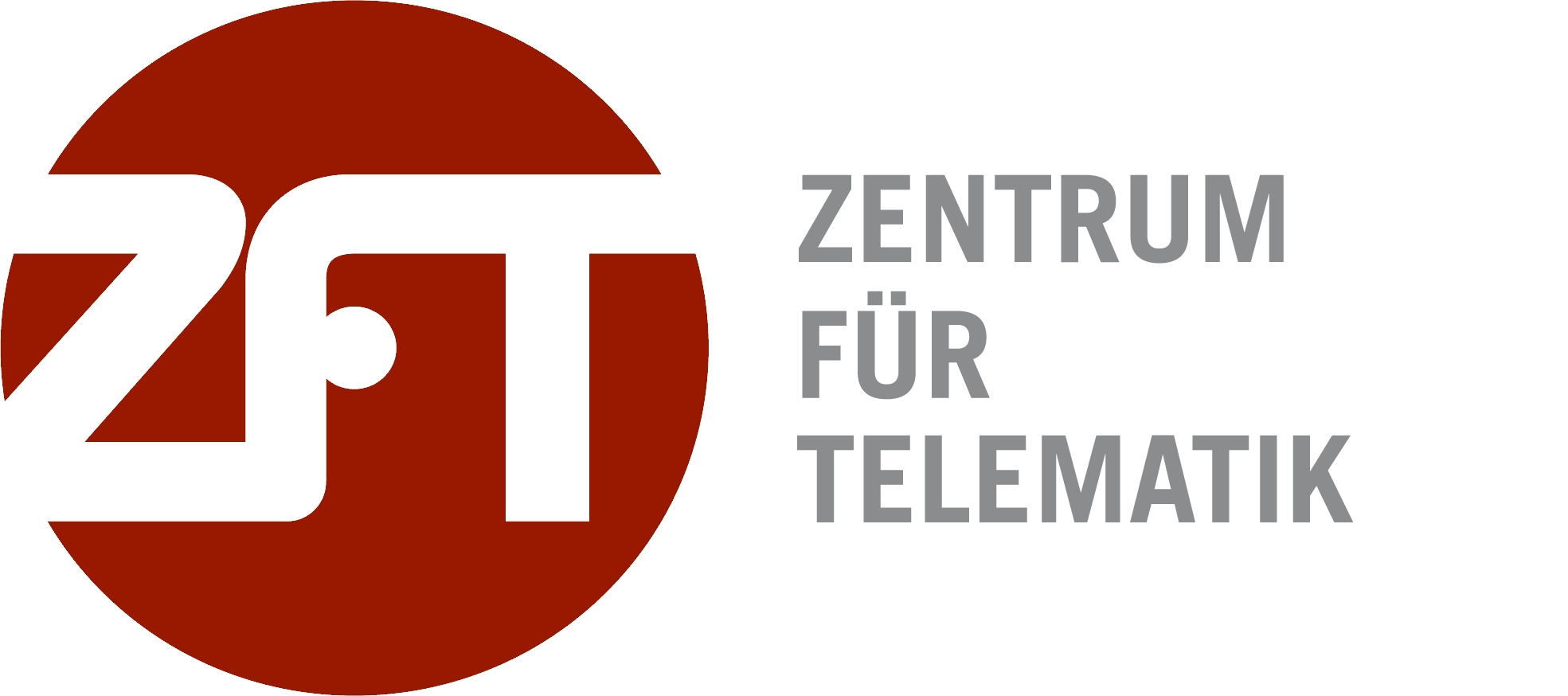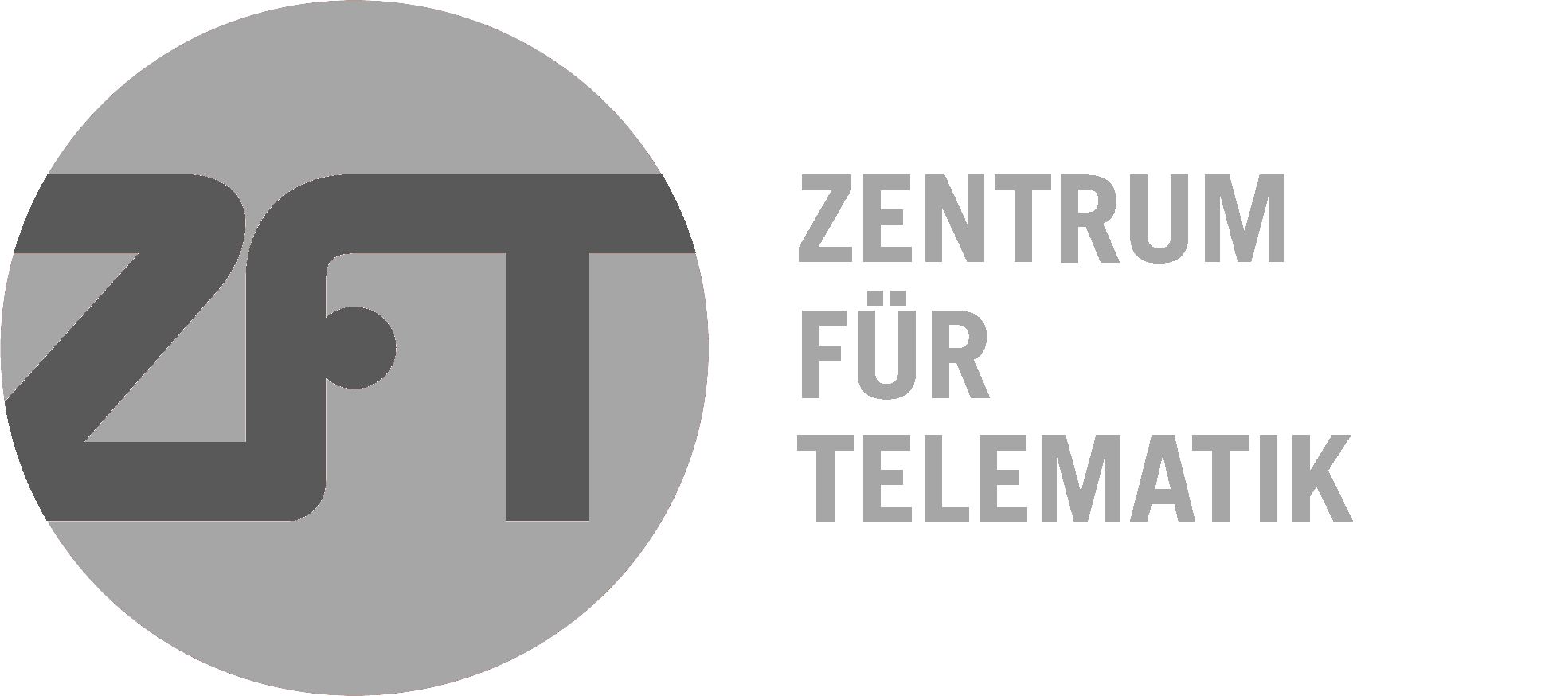Free Navigation
Autonomy - free navigation indoors and outdoors
Technologies for safe, autonomous and accurate navigation are the basis for self-propelled systems in all areas. Robot vehicles have to find their position in known or unknown areas, record their environment from sensor data, and calculate an optimal and collision-free path in order to reliably reach their destination.
ZfT has developed appropriate solutions for real, dynamic indoor and outdoor environments for specific applications and has implemented them ready for use. They allow flexible, non-track-bound, free navigation in dynamic environments for any robot vehicle.
The navigation solution of the Zentrum für Telematik allows the calculation of optimal routes by means of the most important criteria (time-optimal, energy-optimal, etc.) and under consideration of secondary conditions, such as one-way streets and speed limits.
In numerous national and international cooperation projects, ZfT has built up enormous practical implementation know-how in the relevant areas of autonomous driving of robotic vehicles and has been able to integrate this know-how into its own navigation solution over a period of 10 years.
Localization and obstacle avoidance
Together with renowned partners from science and industry, the Zentrum für Telematik was able to develop solutions in the field of localization and obstacle avoidance in numerous joint projects, which are integrated into the current NDT navigation systems. Flexible logistics in industrial production plants are often realized with autonomous robot vehicles. In the demonstrator factory for “Adaptive Production”, networked robot manipulators and robot vehicles are used here to create a flexible material flow between production and test areas. The basis is a highly reliable navigation system on the factory floor in order to carry out the transport orders in an energy-optimized and collision-free manner.
In the project “Safe Navigation for Autonomous Robotic Vehicles (SiNafaR)”, the positioning of a system of cooperating autonomous helicopters and land vehicles was developed and evaluated for outdoor use. Furthermore, methods for obstacle avoidance and path tracking algorithms were successfully developed and demonstrated. This enables large storage areas (for example in ports, airports or railway stations) to be efficiently monitored from a central control centre. An exact localization and path tracking indoors without expensive external reference systems was developed for an automatic, highly accurate application of marking lines for swimming pools and sports halls. Here, a mobile robot can achieve a very high accuracy (< 1mm) when tracing predetermined lines by combining low-cost distance laser detectors with a line laser. The integrated powder coating system thus brings the marking lines to the ground at the pre-planned points.
Optimal path calculation
In the project “Biosensor networks for large-scale environmental monitoring” a biotechnological system of bees and mobile robots was developed, which was used for environmental monitoring. The mobile robots MERLIN of ZfT use a navigation system based on existing map information and current environmental sensor technology to follow an optimal path that covers the entire area. Restrictions (rivers that cannot be crossed, intersecting roads, sloping terrain, etc.) are taken into account. Mathematical models of the robot vehicle and the working environment are combined to adapt to existing conditions by feeding in current sensor data in order to adapt mobility concepts and targets. The ZfT software allows target functions to be defined so that the path is optimized. In dynamic, industrial production environments, these solutions are adapted to driverless transport robot vehicles. In particular, the navigation system has been extended by a dynamic component for hall areas in order to be able to react efficiently and safely to changes in the environment indoors.
Control centers for the coordination of robot systems
In complex situations, autonomous vehicles are often still coordinated by humans. Especially in dynamic environments with rapidly changing requirements and tasks, it is most efficient to coordinate the respective targets by humans. ZfT has implemented such human-machine interfaces in control centers, which also enable control and coordination of a system of several mobile robots. Corresponding assistance systems, which integrate remote control and semi-autonomous robots into an efficient overall system, are available at the center.



